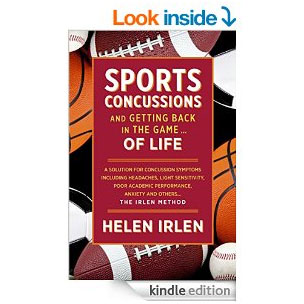Irlen Syndrome in Individuals with Traumatic Brain Injuries
Conducted by Sandra Irlen Tosta, Ph.D.
This research highlights two things. First, the use of colour to treat light-based sensitivities, physical discomfort, and perceptual difficulties in the environment and on the printed page is not restricted to those who have inherited difficulties. This technique is also effective for those whose difficulties are acquired through TBI. Colour intervention may be a tool to reduce stress on the system regardless of whether the cause of this stress is inherited or acquired. Symptoms related to perceptual stress are associated with a number of difficulties, including those with reading, language, sensory integration, speech, motor coordination, body tremors, headaches, seizure activity, word retrieval, communication ability, and significant reduction in anxiety and irritability. Interestingly, most of the changes occurred within a very short period of time.
Filtering specific wavelengths of light appears to not only let the brain function more normally, but it also appears to let the brain heal. Those TBI clients who subsequently received Irlen Coloured Lenses after the completion of this initial study were systematically followed, and observations thus far indicate that they have continued to make steady progress in areas where, prior to the receipt of their Irlen Coloured Lenses, change had not occurred, even years after the accident and with a variety of therapies. Colour appears to protect the brain from further stress and allow healing to take place. Thus far, the longer that head injury clients wear their Irlen Spectral Filters, the greater their ability to function normally cognitively, behaviourally and academically, indicating that colour may, in fact, allow healing to take place by calming down the brain and reducing stress on the central nervous system.
The purpose of this research was to determine the proportion of individuals with traumatic brain injuries whose symptoms could be helped with colour intervention. Thirty-five percent (35%) of the original sample of TBI suffered from substantial difficulties with light sensitivity, strain and fatigue, and reading problems (Self-Test for Irlen Syndrome) that could be alleviated through the use of colour by the Irlen Method. Of this group, nearly 70% were good or excellent candidates for Irlen Coloured Lenses, indicating that a traumatic brain injury can result in a significant sensitivity to light, glare, contrast, bright colours, patterns, and difficulties with demands for continuous performance, which can be helped by colour.
One unexpected finding from this research surfaced during the individualised screenings, where it was identified that most participants were unaware of the severity of their problems in the areas being surveyed and often underscored themselves on the Self-Test. It appeared that these individuals were so overwhelmed by the changes to their life that they had little awareness of the severity of the symptoms contributing to their inability to function.
After the conclusion of the first part of the research, some of the subjects chose to continue testing and obtain Irlen Spectral Filters. They were asked to document all their problems prior to being tested and, once given Irlen Spectral Filters to be worn as glasses, to keep a journal of changes. The journals noted immediate improvement in many of the areas typically associated with TBI such as speech, motor coordination, body tremors, headaches, seizure activity, word retrieval, communication ability, and significant reduction in anxiety and irritability. Most of the changes occurred within a very short period of time.
Those individuals with TBI suffer with extreme symptoms of stress, showing how stress can affect many different areas of functioning. When under stress, the brain, perhaps caused by the damaged brain’s inability to cope, affects not just reading, but also many of the physical, cognitive, and emotional areas where functioning is typically affected by a traumatic head injury.
The individuals identified as having perceptual processing problems answered, on average, 3-and-a-half more (33%) “Yes” answers in each category than those not chosen. A series of independent samples t-tests showed that there were significant differences between the two groups in all 5 categories, with t-values ranging from -2.4 to -5.6, and p-values less or equal to .02 for all tests.
Table 1. Comparison of mean scores in 5 categories on Self-Test for Irlen Syndrome.
Table 2. Types of brain injuries
Likelihood of being a candidate for the Irlen Method was not related to the type of brain injury, as excellent candidates were found distributed across all types of injuries. The 29 individuals identified by the Self-Tests as possibly having symptoms associated with Irlen Syndrome suffered from a wide variety of causes of brain injuries: stroke, accident (car or beating), Multiple Sclerosis, aneurysm, brain surgery, and seizure (see Table 2).
Of those individuals identified for screening, 69% turned out to be good or excellent candidates for the Irlen Method (58% excellent). Thirty-five percent of the original sample (n=55) suffered from light-based sensitivities, symptoms of physical discomfort, and perceptual difficulties that could be helped with spectral modification by the selection colour according to the Irlen Method. This proportion is substantially greater than the approximate 12 – 14% of the general population suffering from colour-responsive perceptual processing difficulties.
Dr. Tosta is a graduate of Cornell University and obtained her Ph.D. at UCLA. Her thesis is cited as meeting the evidence-based standards for the U.S. Department of Education’s “What Works Clearinghouse” and is also cited as an exemplary research design meeting WWC standards.

